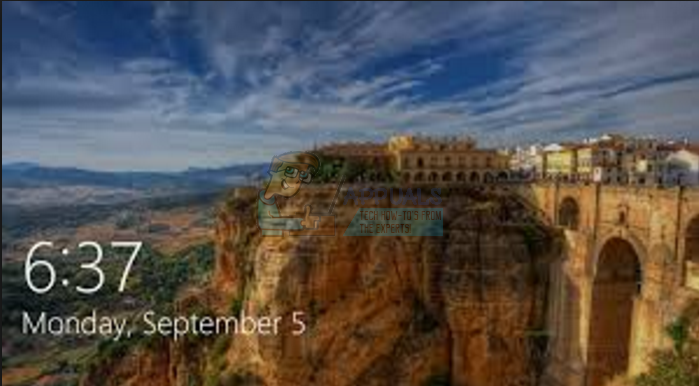Fix: Deleted Picture Appearing in Lock Screen on Windows
Windows 10 offers a captivating lock screen with images that add to a new experience on how you access your apps and news after your computer wakes up from the sleep or hibernation mode or when booting up. The lock screen is the screen you see at startup and when you lock the PC. You will need to dismiss the lock screen to be able to see the sign in screen and sign in to Windows. Your lock screen will display detailed and quick status of apps you choose. You can use Windows lock screen with Windows spotlight, a single picture, or a slideshow of images from added folders as your lock screen background.
If you choose to set your lock screen background as a picture, you will have five images to choose from. These images won’t be a slide show, but will interchange every time Windows enters into the lock screen. The five most recent images that you set as your lock screen background image will be used interchangeably as your lock screen images.
The default lock screen background images included in Windows are located in the C:\Windows\Web\Screen folder. You should however, note that this folder houses the default images only. If you have set personal images as your lock screen images, they will be copied and stored in the C:ProgramDataMicrosoftWindowsSystemData{SID}ReadOnly folder; where {SID} is the user account Security Identifier (SID). You can find your user account SID by typing the following command in Command Prompt: whoami /user. The SystemData folder has tight security (NTFS), and even Administrators can’t view the folder contents by default. However, by typing the full path (with your SID) of the target folder in Explorer, you can see the contents of the folder. This means deleting your images from your personal folders will not remove it as a lock screen background image.
When you open the Lock Screen Settings page, it shows the thumbnail images of last five lock screen images used. If you see an image you don’t want to appear as your background here is how to change it.

Method 1: Add new lock screen background images from the lock screen settings
The lock screen holds 5 images and by replacing them all the cache from old photos is essentially cleaned. To remove a thumbnail image from the Lock Screen Background page:
- Go to Settings (keyboard shortcut: Windows + I) > Personalization > Lock screen
- Click the ‘Browse’ button and select the wallpaper you want. Or you can use the wallpapers from one of the sub-folders under C:\Windows\Web\Wallpaper.
- Repeat the step 4 more times and you’ve replaced the existing listing with your preferred items. Essentially, you have cleared the current 5 images from the cache therefore the image you don’t want will no longer appear on your lock screen.
- To remove one particular item from the listing, click the remaining four items once, so that the unwanted one is pushed down to the 5th position. Now, click the Browse button and select an image. This clears the unwanted image from history.
Method 2: Set new lock screen background images from the image viewer
The default Windows 10 image viewer offers a fast and simple way to set a new lock screen background. If you don’t want to go to settings and browse for your images, you can use the following procedure to replace the unwanted image. However, to make sure your image is no longer in the list of lock screen images, you will have to set new background images 5 times.
- Go to C:/windows/web/screen, standard MS Win 10 pictures are there. (You can also go to any of your personal images folders)
- Open them only one at a time
- Click on (. . ., see more) on the top right corner of the image viewer.
- Use SET AS and choose SET AS LOCK SCREEN. This will replace one of the 5 pictures used for lock screen (least recently selected).
- Do this for 5 of the pictures, and it will overwrite the pictures that are used for lock screen.
You can also use Ctrl + L in the Windows image viewing application to set an image as your lock screen background.
Method 3: Using Powershell
We can also make use of Powershell to get rid of saved pictures that we are unable to delete otherwise. In order to do that:
- Press “Windows” + “R” to open the run prompt and type in “Powershell”.
- Press “Shift” + “Ctrl” + “Enter” to provide adminsitrative privileges.
- Type in the following commands and press “Enter”.
C:\ProgramData\Microsoft\Windows\SystemData\S-1-5-18\ReadOnly\LockScreen_Z del .\LockScreen___1920_1200_notdimmed.jpg del .\LockScreen___3440_1440_notdimmed.jpg
- Check to see if the issue persists.